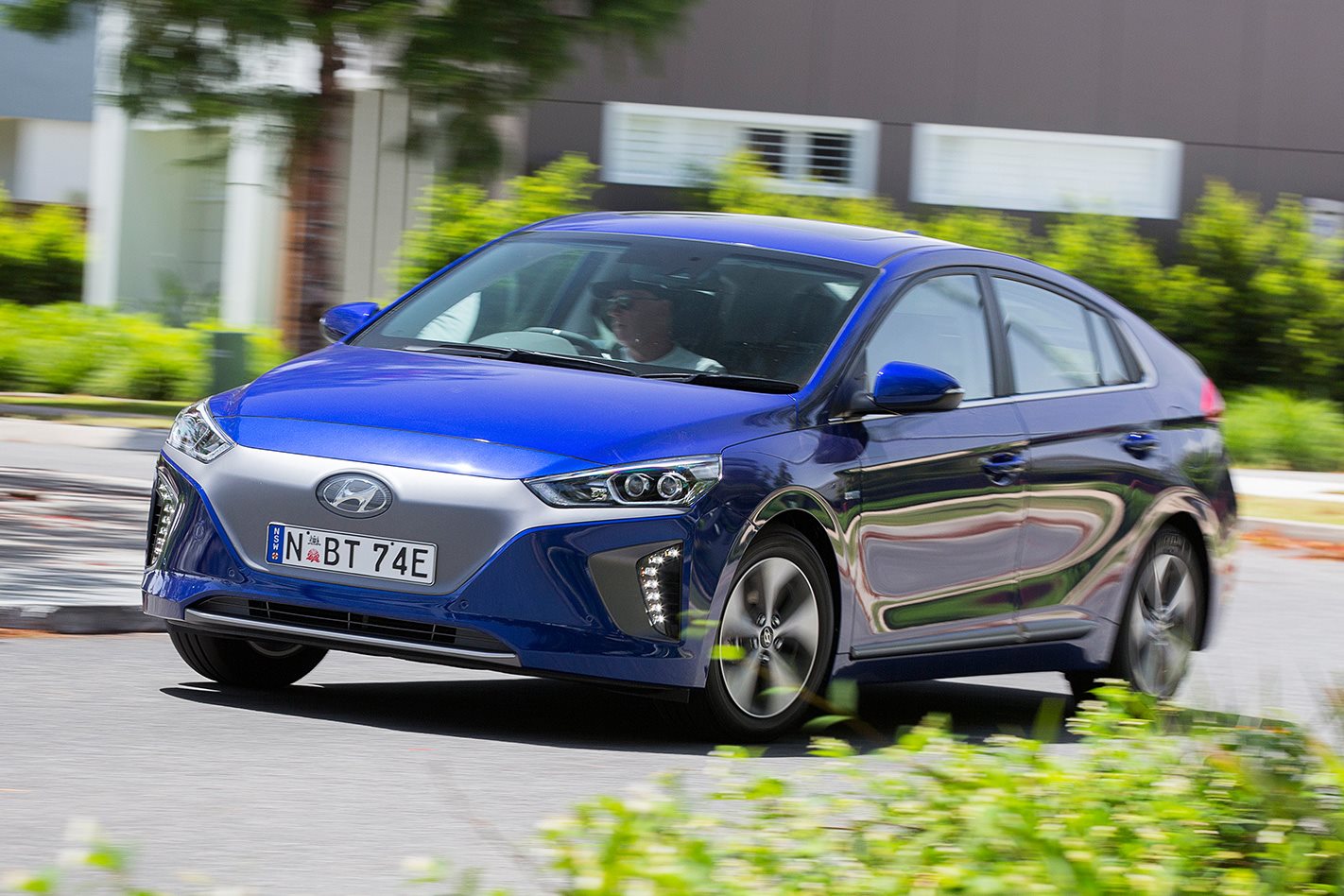While Tesla drags its feet on selling an affordable electric vehicle in Australia, Hyundai has quietly launched the cheapest EV in the country. But is it enough to convince buyers to part with almost $50,000?
WHAT IS IT?
Similar in size to a Hyundai Elantra, the Ioniq is Hyundai’s first fully electric vehicle offered in Australia.

WHY WE’RE TESTING IT
Hyundai has offered the regular hybrid Ioniq in Australia since early 2018, but has now added plug-in and electric variants. With keen pricing which undercuts all its rivals in the country, the Ioniq could be the car to democratise the electric revolution in Australia.
MAIN RIVALS
Nissan Leaf, Renault Zoe, Toyota Prius
THE WHEELS REVIEW
ONE of the tragedies of the Hyundai Ioniq is, initially at least, it won’t be bought by many members of the Australian public.
Speaking to media at the launch of the car, Hyundai executives admitted fleet buyers are expected to make up the largest portion of buyers for this all-new electric vehicle. Which is a shame, because the Ioniq is an electric car that can meet most of our everyday needs at an affordable price.
The entry-level Ioniq Electric Elite costs $44,900, which undercuts the Renault Zoe Life by $2500, and unlike the French hatch, the Korean feels worth every cent. Equipment is best described as generous, with the Elite packed with a full suite of safety features (AEB, forward-collision warning, blind-spot monitoring, lane-keep assist, driver attention alert, rear cross-traffic alert, and adaptive cruise), as well as an 8.0-inch central touchscreen fitted with Apple CarPlay and Android Auto, a factory sat-nav, keyless entry and start, dusk-sensing headlights, a rear-view camera, and 7.0-inch digital instrument cluster.

Stepping up to the $48,990 Ioniq Electric Premium nets you a leather-appointed interior, heated and ventilated front seats with electric adjustment, a heated steering wheel, dual-zone climate control, and a power sunroof.
Both have the same underpinning, which comprises a 28kWh lithium-ion polymer battery, sending 88kW and 295Nm to the front wheels. This is placed beneath the rear seats and cargo bay, eating into boot space (which is down from the hybrid’s 456 litres to 350 litres).
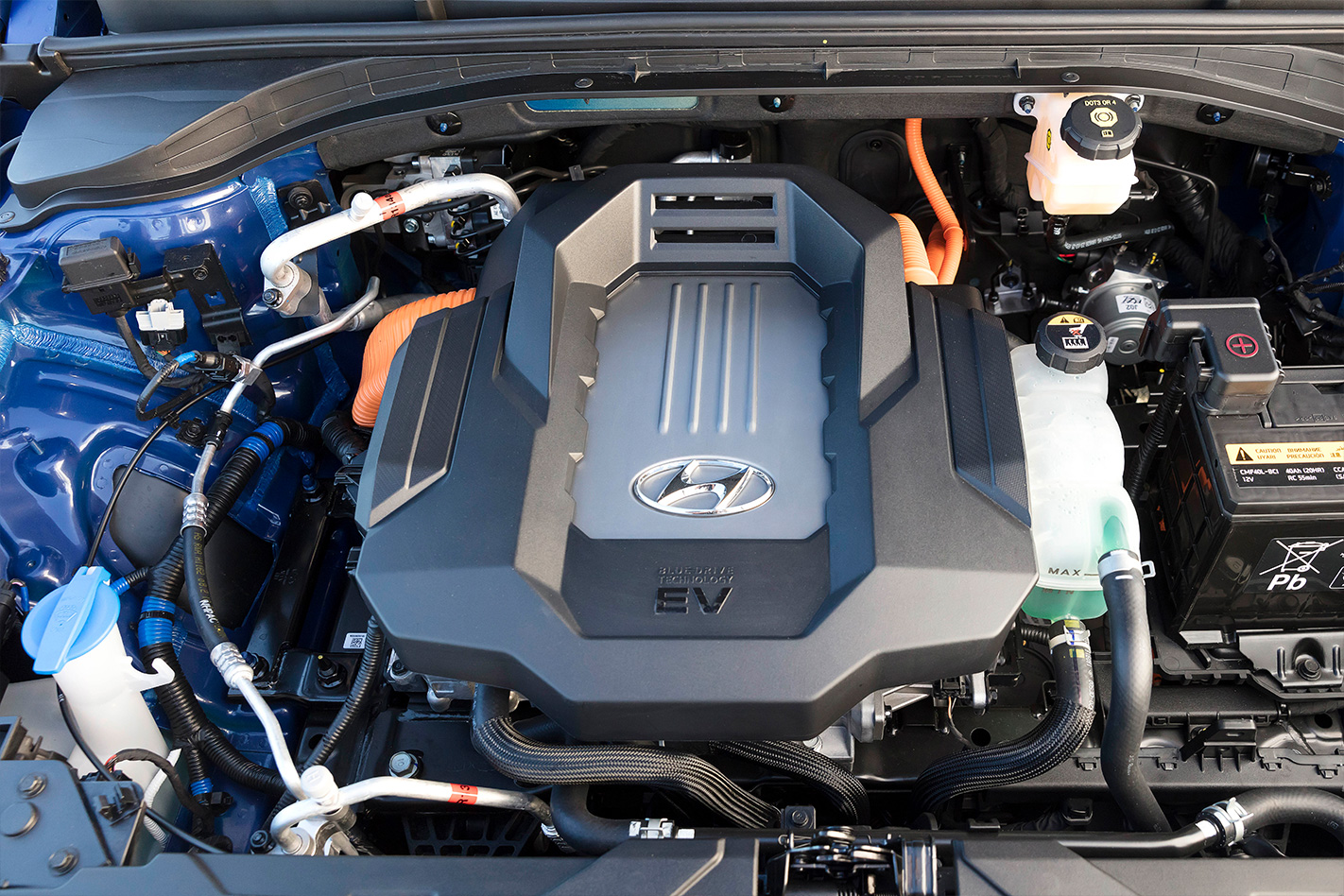
While the Ioniq Electric has achieved an official range of 280km on the NEDC cycle, Hyundai Australia says Aussie customers will realistically achieve 230km of fully electric driving before the batteries are drained. Using a 100kW fast charger, the Ioniq can be charged to 80 percent from empty in 23 minutes, while a 6.6kW home charger capable of fully charging the car in four and a half hours is available for $1995. Using a normal wall socket at home, the Ioniq takes roughly 12 hours to fully charge.
2018 Hyundai Ioniq Electric review
Unlike its small hatch rivals the Nissan Leaf (due Down Under early next year) and the Renault Zoe, the Ioniq offers sedan practicality, with an identical 2700mm wheelbase as the Hyundai Elantra, while being 20mm wider and higher, and 100mm shorter overall than its combustion-powered sibling. The rear seats offer enough room for two adults to sit comfortably.
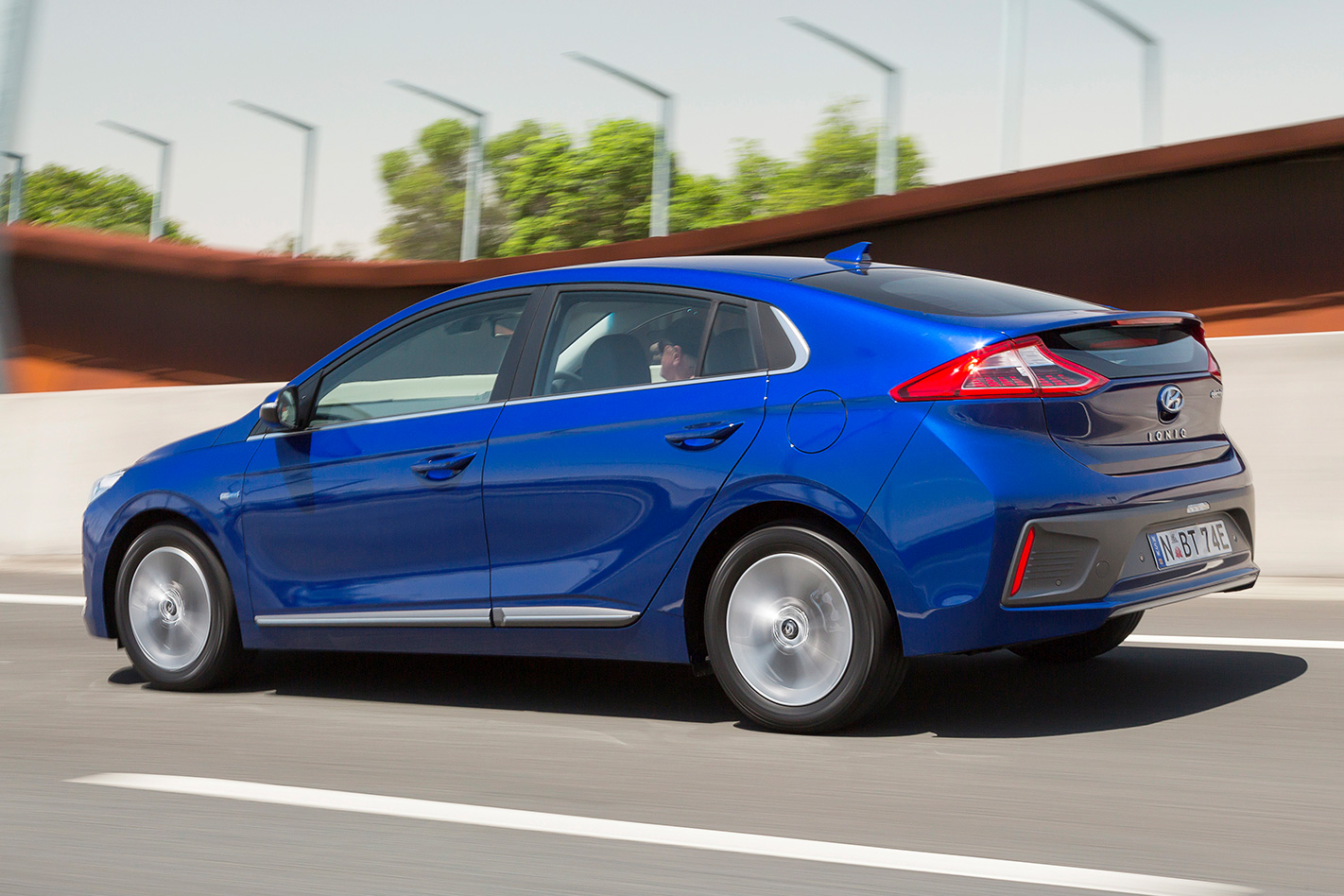
As is common with electric cars, the instant torque and power gives the Ioniq decent off the line punch, even in its normal setting. Hyundai claims 0-100km/h is taken care of in 9.9 seconds, but it’s the sprint to 60km/h which feels the most enthusiastic. However, there’s a sport button nestled above the gear selector, which when pressed, gives the car a gutsier throttle response.
This entertaining performance is let down by the handling, which is safe but hardly inspiring, and let down by steering that lacks fidelity around dead centre. Packaging constraints mean the Ioniq has a torsion beam rear suspension, unlike the IRS of the regular hybrid. However, Hyundai Australia’s local engineering team have done an impressive job tuning the system, with the Ioniq electric providing a cosseting ride, which soaks up bumps nicely.
The technical ability of the Ioniq Electric isn’t what makes it so impressive, with a range and performance similar to its rivals. However, the keen pricing, paired with its genuine practicality makes it the best argument for electric vehicle conversion Australia has seen yet. Think of it not as a radical diversion from combustion vehicles, but an Elantra-like sedan which just happens to not use any fuel. Once Australia’s EV infrastructure catches up, which should happen in the next couple of years, the Hyundai Ioniq should be on the shopping list for the environmentally-conscious family.
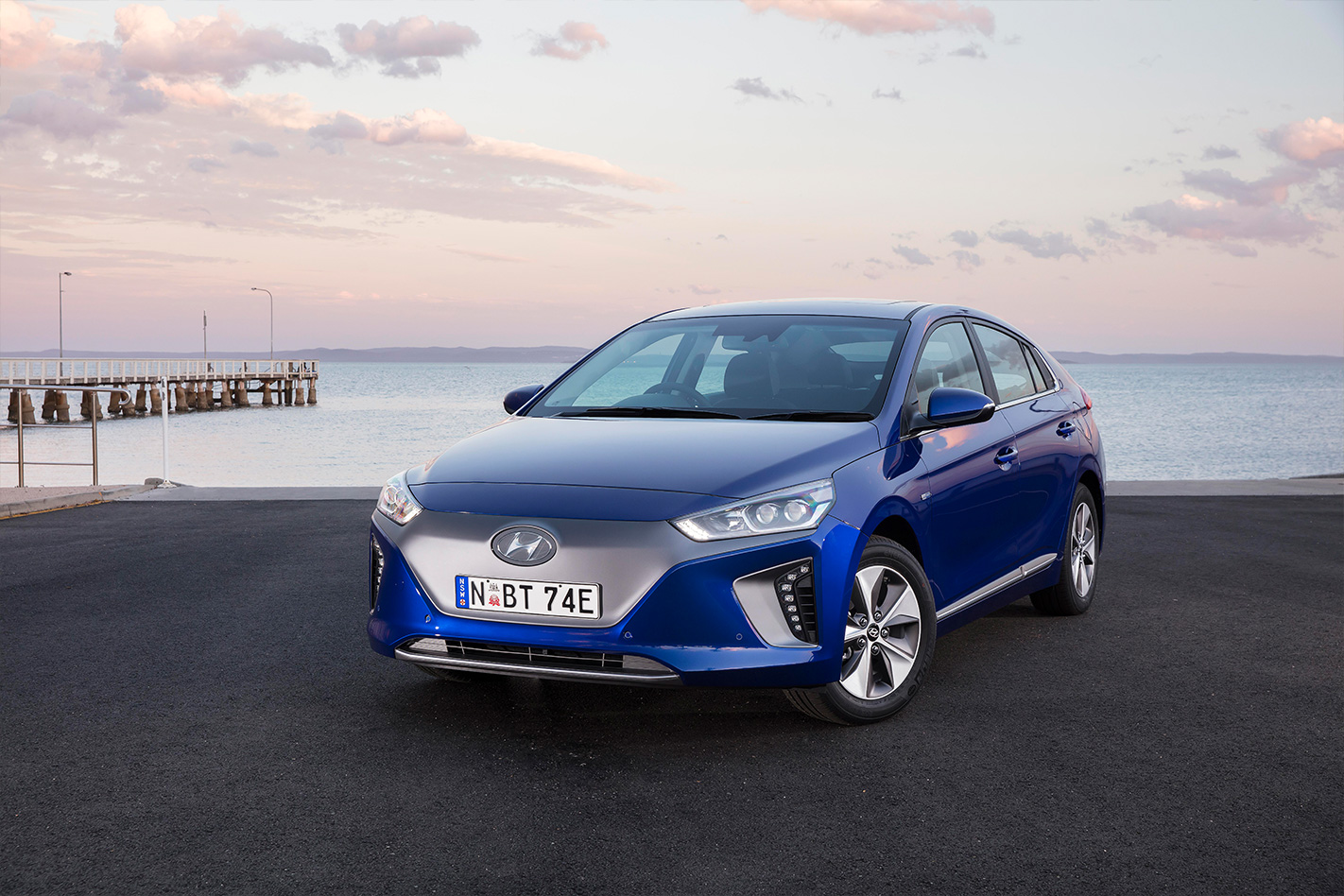
THE WHEELS VERDICT
If convincing the general public of the merits of electric vehicles was the sole goal of the Hyundai Ioniq, it does an impressive job. Even if it wasn’t the cheapest EV currently available, its well packaged interior, sporty performance, generous range, and genuine practicality makes it one of the best fully-electric offerings in the limited Aussie market. While it features steering that lacks crispness at dead centre and suffers a common EV issue of a lack of charging infrastructure, the Ioniq Electric delivers an intriguing argument for ditching hydrocarbons and converting to electric mobility.
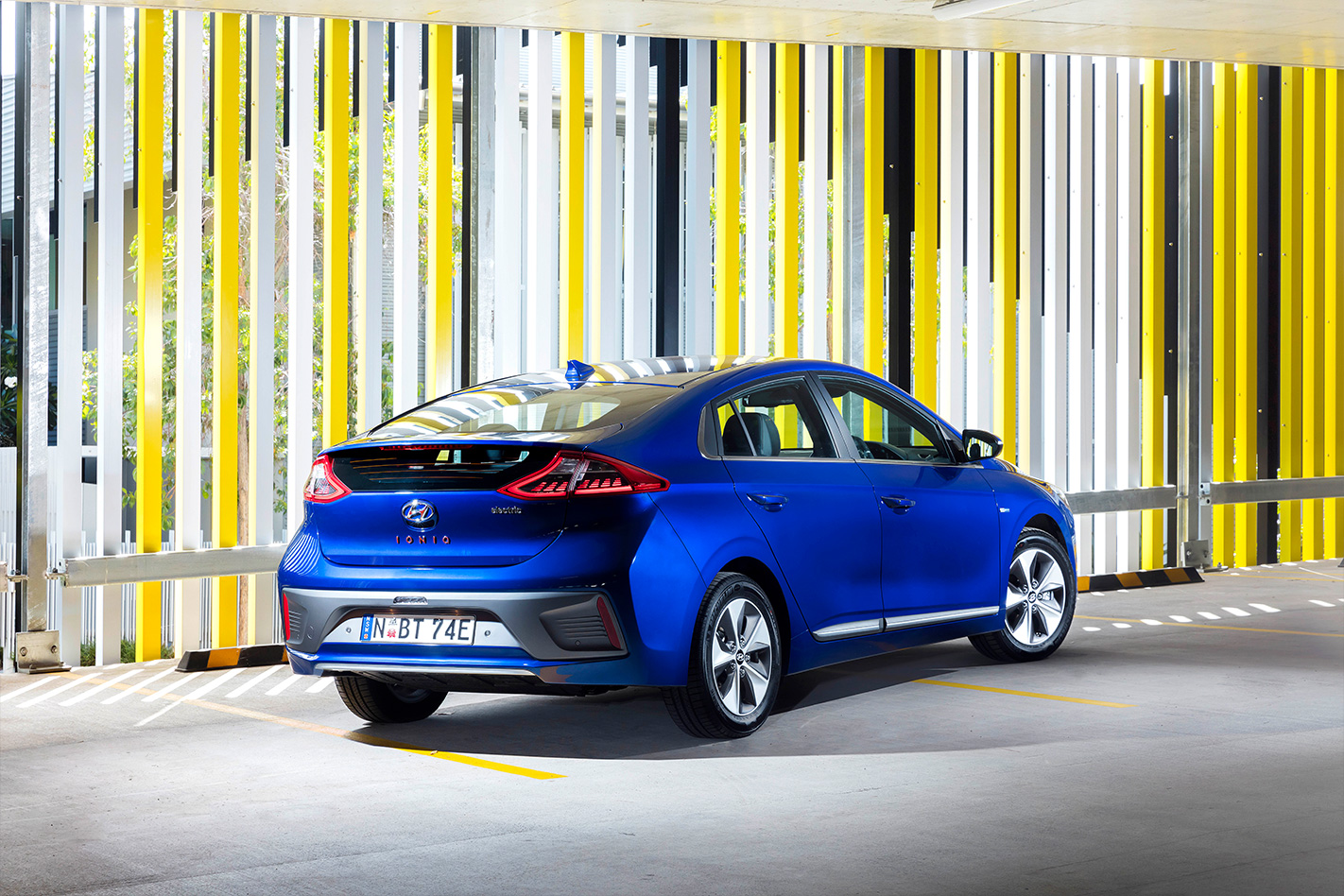
PLUS: Efficiency, price, practicality, electric performance MINUS: Held back by EV infrastructure for now, torpid handling
SPECS
Model: Hyundai Ioniq Electric Motor: permanent magnet synchronous Max power: 88kW Max torque: 295Nm Transmission: fixed single speed Weight: 1420kg 0-100km/h: 9.9sec (claimed) Energy consumption: 11.5kWh/100km Price: $44,900 On sale: First quarter 2019


